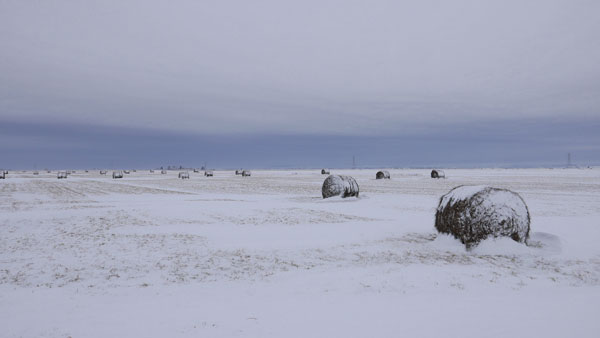Marsh and Barn / Author
Memory, Place & Change on the Tantramar Marshes
Aiden Fudge, MLA Candidate, University of Guelph / Grant $1,500
EN_
The Tantramar Marshes, located at the heart of the maritime provinces of Canada, is a landscape layered in cultural and natural significance. As one of the largest contiguous salt marsh ecosystems on the east coast of North America, it possesses a stunning diversity of ecological services. A rich cultural history parallels its ecological value, a past that tells the story of pre and post-Canadian history, writ large across its fields, rivers, dykes, and architectural and landscape artifacts.
It is a landscape of 7,000-year-old evidence of Mi’kmaw hunting practices, 350-year-old Acadian traces of land reclamation from inhospitable salt marshes and the site of their expulsion by the British colonial forces. It is recognized in the maritime provinces as a cultural and ecological crossroads, an essential bridge of fragile land that connects Nova-Scotia to New Brunswick and the western expanse of mainland Canada. Rising sea levels and intensified storm systems are now threatening its future. It is in a vulnerable position. It has no overarching protection; there is currently no implemented adaptive strategy to protect its assets. This Master’s thesis will tell its story as a landscape narrative, capture its genius loci through an inventory and analysis of its features, overlaid by predictions of the drastic change that is forecasted by the effects of climate change. This research will help to inform and empower future landscape interventions and conservation practices that seek to respond to the challenges of our times on the Tantramar Marshes.
Updates_ Mises à jour
2019.09.23
Abstract:
The Tantramar Marshes are one of the largest contiguous salt marsh ecosystems on North America’s Atlantic Coast. The Marshes represent a hybrid landscape of agriculture, cultural artifacts, and transportation and energy infrastructure, marking a cultural and ecological crossroads- an essential bridge of fragile land connecting Nova-Scotia to New Brunswick. Rising sea levels are threatening the Marshes’ functions; they are in a vulnerable position with no overarching regulatory protection or adaptive strategy.
The goal of the research was the creation of a landscape narrative of the Tantramar Marshes for use as catalyst for future landscape interventions. The landscape narrative method uses archival and secondary source data to interpret existing conditions and predictions of future outcomes, defining distinct epochs of landscape change. This research is intended to inform future landscape interventions that seek to respond to the challenges of climate change and shifting land use on the Tantramar Marshes.
Aiden Fudge > Masters Thesis_ Memory, Place and Change on the Tantramar Marshes

Winter marsh / Author
Mémoire, lieu et changement dans les marais de Tantramar
Aiden Fudge, candidate à la M.A.P., Université de Guelph / Bourse 1500 $
FR_
Les marais de Tantramar, situés au cœur des provinces maritimes du Canada, forment un paysage à la fois culturel et naturel. Il s’agit de l’un des plus grands écosystèmes de marais salés de la côte Est de l’Amérique du Nord, un milieu d’une diversité écologique étonnante. À sa valeur écologique s’ajoute un riche passé culturel qui relate l’histoire pré et post-canadienne, à travers ses champs, ses rivières, ses digues et ses artefacts architecturaux et paysagers.
Ce paysage témoigne des pratiques de chasse des Mi’kmaw il y a 7000 ans et de la présence des Acadiens il y a 350 ans qui transformèrent des parcelles des marais salés en prés fertiles, et du lieu d’où ils furent expulsés par les forces coloniales britanniques. Cette région est reconnue dans les provinces maritimes comme un carrefour culturel et écologique, un pont essentiel de terres fragiles qui relie la Nouvelle-Écosse au Nouveau-Brunswick, et à l’étendue occidentale du Canada continental. L’élévation du niveau de la mer et l’intensification des systèmes orageux menacent maintenant son avenir. Il n’y a aucun programme de protection ni aucune stratégie d’adaptation mise en œuvre pour protéger le milieu. Ce mémoire de maîtrise présentera le récit historique des lieux sous forme de paysage narratif, capturera l’esprit des lieux en faisant l’inventaire et l’analyse de ses caractéristiques, et fera des prédictions sur les répercussions des changements climatiques. Cette recherche contribuera à éclairer et à responsabiliser les futures interventions sur les paysages et les pratiques de conservation en réponse aux défis de notre époque dans les marais Tantramar.

